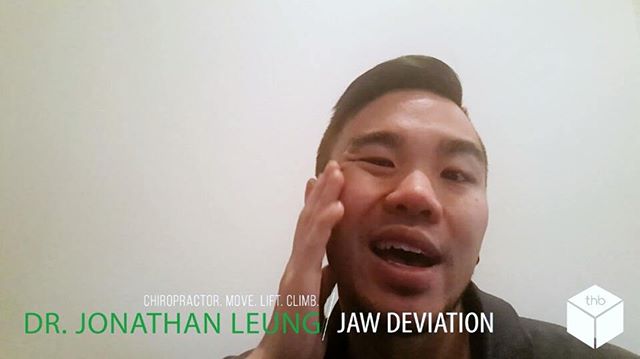TMJ Self screen – DeviationThis is a test of your temporomandibular joint (TMJ) / jaw. Is there any pain? If your jaw moves to one side? Is it on opening? Is it on closing? Is it both? Is there a click? Does your jaw move to one side then back? As you can see, there are a lot of questions to ask and get the answers to. As a disclaimer this is just a screen you can use to assess if you may potentially have a Temporomandibular joint disorder (TMD). The easiest thing we can focus on here is your function. When you attempted the previous self screen – Could you open 3 knuckle widths? – normal More? – HYPERmobile less? HYPOmobileNow remember your jaw has two temporomandibular joints. If one side has MORE range than the other. your jaw will shift to a side. Sometimes too much range / or too little range can be caused issues affecting the articular disc. If you have a click chances are you may have what&;s known as a disc displacement. The next question is which way is the disc displacing and what can we do about it. But first, ask yourselves these questions6. What movements cause your jaw pain? does it change over time?7. Do you have pain during chewing? swallowing? biting? yawning? speaking?8. Do you habitually chew gum? eat lots of chewy candies, hard candies, corn nuts? Do you continually move your mouth?9. Do you usually chew on just one side?10. Does anybody tell you that you grind your teeth at night?Your answers to these questions should get you thinking about your daily habits and what types of things may be causing your TMD. It is much better to determine and treat the root cause of the problem. But for now the next videos in this series will show you some basic stretches and exercises for your TMJ. series

Posted in Instagram | Tagged: 39, anatomy, change, chiro, culture, exercise, fitness, headaches, health, jaw, markhamchiropractor, motivation, movement, pain, physio, prevention, stretching, temporomandibularjoint, thehealthbox, TMD, TMJ, TMJseries, toronto 



 by
by 
« TMJ Self screen – Jaw opening. This is a test of your temporomandibular joint (TMJ) / jaw. It is a basic function of your jaw in order to allow you it to function! You need to be able to do this to eat. Try the screen. Answer the following questions. I&;ll be adding more and more questions to this series that will prompt some thought if you have jaw issues (whether you know it or not!) 1. Could you open it wide enough?2. Was there a click or sound? If so, on opening or closing? or both3. Did it hurt? If so, on opening or closing?4. Did it lock or get stuck? 5. If you have any pain, tightness or discomfort – which side is it?Answer these questions as they can indicate a TMJ dysfunction or TMD. Some other symptoms to note during your self scree of TMD include: HeadacheWorn teeth (due to the teeth not resting on each other properly or whats known as malocclusion)Painful muscles in the cheek, temple, or neckClicking or poppingEarachesPain behind the eyesRinging in the earsToothache What we&;re trying to begin to do is pain a diagnostic picture. As a clinician these are the structures I will be checking and keeping in mind with your answers: Musculature of the Neck, face, and jawCartilaginous disk Ligaments, nerves, and blood vessels surrounding the joint, mouth, and teethDoes this sound like a lot? Well it is! but we&;ll slowly delve further into the rabbit hole. series

Comments are closed.